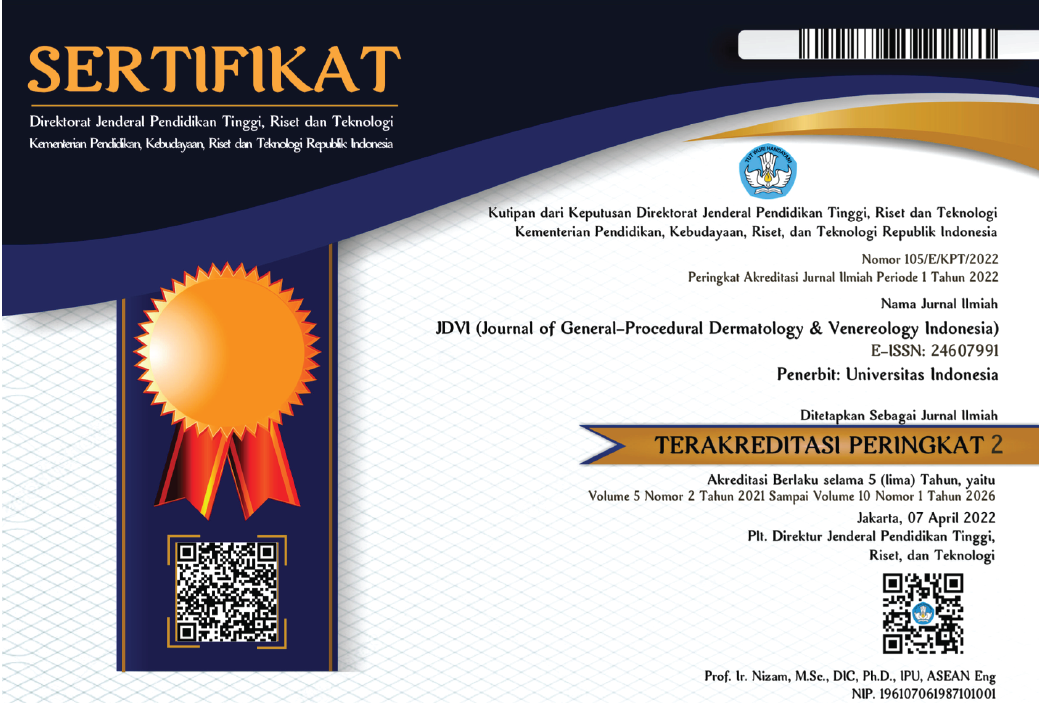Abstract
Photodermatoses cover the skin’s abnormal reactions to sunlight, usually to its ultraviolet (UV) component or visible light. Etiologically, photodermatoses can be classified into 4 categories: (1) immunologically mediated photodermatoses (idiopathic photodermatoses); (2) drug- or chemical-induced photosensitivity; (3) hereditary photodermatoses; and (4) photoaggravated dermatoses. The incidence of photodermatoses in the pediatric population is much lower than in adults, Polymorphous light eruption (PMLE) is the most common form of photodermatoses in children, followed by erythropoietic protoporphyria. Early diagnosis and investigations should be performed to avoid long-term complications. Photoprotection is the mainstay of photodermatoses management, including use of physical protection and sunscreen.
Recommended Citation
Fauziah, Siti Nurani; Indriatmi, Wresti; and Legiawati, Lili
(2017)
"Photodermatoses in Children,"
Journal of General - Procedural Dermatology and Venereology Indonesia: Vol. 2:
Iss.
2, Article 6.
DOI: 10.19100/jdvi.v2i2.64
Available at:
https://scholarhub.ui.ac.id/jdvi/vol2/iss2/6
Included in
Dermatology Commons, Integumentary System Commons, Skin and Connective Tissue Diseases Commons






























